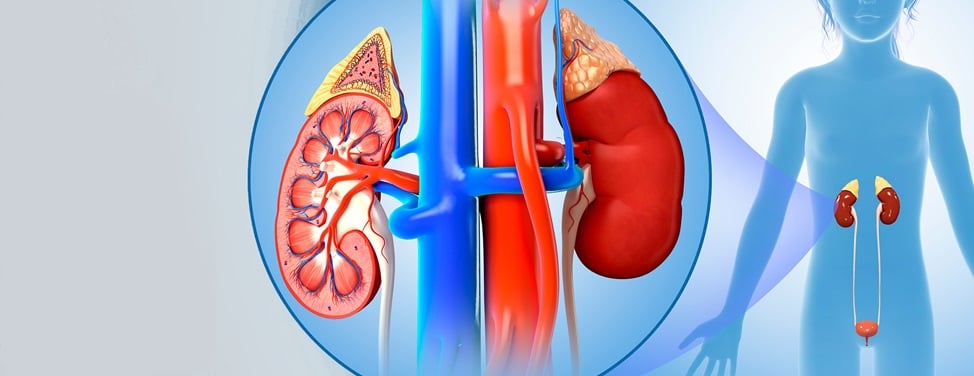An antegrade continence enema (ACE) is a surgical treatment for children with chronic bowel problems, such as recurring bouts of constipation, diarrhea and fecal incontinence. It is most often performed on those whose bowel problems are due to neurological disorders, such as spina bifida.
The surgery involves making a small opening in the abdomen and connecting it to the appendix or another part of the large intestine. Enemas can then be delivered through this passageway to flush stool out of the body. The ability to empty the colon regularly gives patients better control over bowel movements, helping to prevent constipation and episodes of incontinence. (The procedure is sometimes called a "Malone ACE" after the surgeon, Padraig Malone, who pioneered the operation.)
Preparing for surgery
Your child will be admitted to the hospital the afternoon before the scheduled surgery. It's important for the bowels to be completely clear of stool before the procedure. Depending on the degree of your child's constipation, we may ask you to start bowel clean-out measures a day or two before coming to the hospital. We will continue this process once your child is admitted.
To decrease the risk of post-op infection, your child will also be started on antibiotics.
The procedure
ACE is performed either as a traditional surgery, through a long incision down the abdomen, or as a minimally invasive operation, with the surgeon using a slender scope instrument – a laparoscope – that passes into the abdomen through a much smaller incision. If this is the only procedure your child is having, your surgeon is likely to opt for the minimally invasive approach.
To create the pathway for administering enemas, surgeons most often make use of the appendix, a slender tube attached to the bowel that isn't essential to digestive function. The surgeon connects one end of the appendix to a small opening in the abdomen, preferably at the belly button, and leaves the other end in the bowel. The opening to the outside of the body is called a stoma. If there is no appendix to use, the surgeon fashions a tube from a piece of bowel. A catheter (a thin tube) is threaded through the stoma and taped in place temporarily, to keep the stoma open while the wound heals.
The operation can take anywhere from two to five hours. The operating room nurse will periodically give you progress updates.
Recovery in the hospital
Most children are in the hospital for four to five days following an ACE procedure. While hospitalized, your child will receive pain medication, as needed, first through an IV catheter and later by mouth. We have found that many children also benefit from having local anesthesia (injections that block nerves from sending pain signals in the treated area). Younger children will receive pain medication (usually morphine) intravenously before the nerve block wears off. Most older children, and those with spinal anomalies, are candidates for patient-controlled analgesia (PCA) pumps. This device allows patients to infuse their own pain medication as needed, helping to maintain consistent pain control. Before the scheduled surgery, you will meet with the anesthesiologist and discuss the best form of pain control for your child.
For several days after the surgery, your child will have a nasogastric (NG) tube, which is used to drain stomach secretions through the nose. The bowels don't function normally after surgery, so an NG tube is needed to allow the bowels and stomach to recuperate and heal, and to help prevent the nausea and vomiting that often occur after surgery. During this period, your child won't be able to eat but will receive IV fluids to prevent dehydration. Once the bowels begin to work and the NG tube is removed, your child will be started on a liquid diet and then transitioned to a regular diet, as tolerated.
After the NG tube is out and the bowels begin to recover, ACE flushes will be started, using the catheter placed during surgery. The volume of the enema is initially small and gradually increased, as tolerated, each day. You'll receive a schedule for the flushes, including amounts and type of solution, before your child leaves the hospital. We'll make sure you feel comfortable performing the flushes and know how to troubleshoot if there's a problem. We'll also show you how to take care of the catheter and the site around the stoma.
Recovery at home
It takes a few weeks for the stoma to heal. A small amount of reddish-brown drainage at the site is normal. The skin around the catheter typically reddens and may show pus-like secretions. These are natural reactions to the catheter. The site can be cleansed with soap and water daily and as needed.
If you are concerned with any aspect of your child's progress after surgery, please contact our office at (510) 428-3402. We are available 24 hours a day, seven days a week. You should also call us about any of the following:
- A temperature greater than 100.5 F.
- Abdominal pain that isn't relieved by the prescribed pain medication.
- Excessive bleeding from the incision. (It's normal to see some spotting or a few blood stains on the dressing.)
- The catheter falls out.
- You can't flush the catheter.
- Your child is unable to take in fluids.
- Persistent vomiting.
- No stool output from ACE flushes.
Please keep in mind that it's normal in the early post-op period to have stool incontinence between ACE flushes as well as occasional constipation. Figuring out your child's ideal flush amount, solution and schedule will take a little time. Depending on many factors – including the underlying diagnosis, degree of constipation prior to surgery, and effectiveness of the presurgical clean-out – stool incontinence and constipation may continue anywhere from one week to two months after surgery. We will confer with you regularly by phone to adjust elements of your child's ACE program until we have the optimal plan.
Three to four weeks after the surgery, your child will have a follow-up appointment in person. We will remove the catheter, which most children say feels strange but not painful. Then we'll select the appropriate catheter size and teach you how to catheterize – pass a catheter through – the stoma in order to perform flushes. Depending on factors such as whether your child is scheduled for other surgeries and how far you live from the hospital, we may ask you to stay overnight so we can be sure the catheterization is going smoothly and address any problems or questions that may arise.
Even after your child's flush program at home is well established, you should call our office at (510) 428-3402 about any of the following:
- Excessive vomiting
- Difficulty catheterizing the stoma
- No stool output from ACE flushes
In addition, please call us if you wish to make any changes to the flush solution or procedure.


































